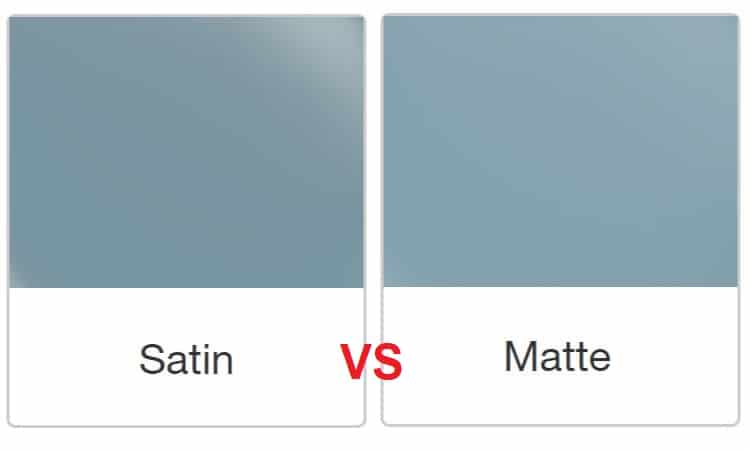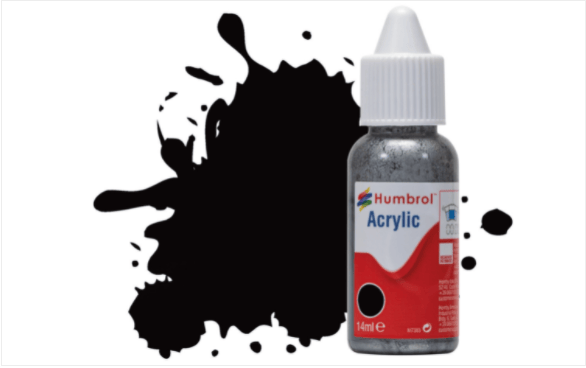Satin acrylic paint is a versatile and popular type of paint used by artists, crafters, and DIY enthusiasts. It offers a smooth and subtle sheen that falls between a matte and glossy finish.
With its strong pigmentation and quick-drying formula, satin acrylic paint is perfect for various surfaces, including canvas, wood, metal, and more.
It provides excellent coverage and can be easily layered or blended, allowing for endless creative possibilities. Whether you’re creating artwork, decorating furniture, or adding a pop of color to your crafts, satin acrylic paint is a reliable choice.
Its durability and resistance to fading make it ideal for both indoor and outdoor projects, ensuring long-lasting results that stand the test of time.
Moreover, satin acrylic paint is water-based, making it easy to clean up with soap and water while still wet, minimizing the hassle and mess.

Different Techniques to Try with Satin Acrylic Paint
If you enjoy painting and want to explore different effects and textures, satin acrylic paint is a versatile medium that can offer you various techniques to experiment with. Satin acrylic paints are known for their smooth and velvety finish, giving your artwork a subtle sheen. In this section, we will discuss some exciting techniques that you can try with satin acrylic paint to enhance your artistic creations.
1. Blending
Blending is a technique that involves smoothly transitioning colors from one to another. With satin acrylic paint, you can achieve seamless color gradations. Start by applying a base color to your canvas. Then, using a clean brush or sponge, apply a second color next to the base color. Blend the two colors together using gentle strokes, creating a gradual transition. This technique allows you to create stunning ombre effects and soft transitions between colors.
2. Dry Brushing
Dry brushing is a technique that involves using minimal paint on a dry brush to create a subtle, textured effect. Dip your brush into the satin acrylic paint and remove any excess by wiping it on a paper towel. Then, lightly brush the paint onto the canvas, creating thin strokes. This technique is great for adding texture to your artwork, such as creating the appearance of tree bark or adding highlights to a textured surface.
3. Stippling
Stippling is a technique that involves creating small dots or stippled patterns with the brush. Load your brush with satin acrylic paint and lightly dab it onto the canvas, creating a pattern of dots. You can vary the pressure and density of the dots to achieve different effects. Stippling is commonly used to create texture, add depth, or create a pointillist effect in your artwork.
4. Glazing
Glazing is a technique that involves layering thin, translucent layers of satin acrylic paint over a base color. Start by applying a base color to your canvas and allow it to dry completely. Then, mix a small amount of satin acrylic paint with a glazing medium or water to create a translucent mixture. Apply this mixture over the base color, allowing the base color to show through. This technique adds depth and richness to your artwork, as well as creating a luminous effect.
5. Sgraffito
Sgraffito is a technique that involves scratching or scraping through layers of paint to reveal the underlying colors or textures. Apply multiple layers of satin acrylic paint to your canvas, allowing each layer to dry before applying the next. Once the layers are dry, use a sharp tool, such as a palette knife or a toothpick, to scratch or scrape away areas of paint, exposing the layers beneath. This technique allows you to create intricate designs, add texture, or emphasize certain areas of your artwork.
6. Pouring
Pouring is a technique that involves pouring satin acrylic paint onto a canvas and allowing it to flow and blend naturally. Mix your satin acrylic paint with a pouring medium to achieve the desired consistency. Pour the mixture onto the canvas, tilt the canvas to allow the paint to spread and blend, and let it dry. This technique creates unique and abstract patterns, and you can experiment with different color combinations and pouring techniques to achieve different effects.
These are just a few techniques you can try with satin acrylic paint. Each technique offers its own unique effects and possibilities. So, grab your satin acrylic paint and brushes, and let your creativity flow!

Tips for achieving a smooth and glossy finish with satin acrylic paint
When it comes to painting, achieving a smooth and glossy finish can make a world of difference in the final appearance of your project. If you’re working with satin acrylic paint and aiming for that perfect finish, here are some tips to help you achieve the desired result:
1. Proper surface preparation:
Before you start painting, it’s crucial to prepare the surface properly. Make sure the surface is clean, dry, and free from any debris, grease, or dust. Sanding the surface with fine-grit sandpaper can help create a smooth and even surface for the paint to adhere to.
2. Use high-quality brushes or rollers:
The quality of your brushes or rollers can greatly impact the outcome of your painting project. Invest in high-quality brushes or rollers that are specifically designed for acrylic paint. Look for brushes with synthetic bristles and rollers with a smooth nap. These tools will help you achieve better coverage and a smoother finish.
3. Thin the paint if necessary:
Satin acrylic paint is known for its thicker consistency, which can sometimes lead to visible brush strokes or an uneven finish. If you find that the paint is too thick, consider thinning it with a small amount of water or a compatible acrylic medium. This will make the paint easier to work with and help create a smoother finish.
4. Apply thin and even coats:
Instead of applying one thick coat of paint, it’s better to apply multiple thin and even coats. This will allow each layer to dry properly and minimize the chances of brush strokes or uneven areas. Make sure to let each coat dry completely before applying the next one.
5. Sand between coats:
If you notice any imperfections or rough areas between coats, gently sand them with a fine-grit sandpaper. Sanding will help smoothen the surface and create a more uniform finish. Remember to wipe away any dust before applying the next coat of paint.
6. Avoid overworking the paint:
When applying the paint, avoid overworking it by continuously brushing or rolling over the same area. This can disturb the drying process and create visible brush strokes or streaks. Instead, aim for smooth and controlled brush strokes or roller passes in one direction.
7. Consider a top coat or varnish:
To enhance the glossiness and durability of your satin acrylic paint, consider applying a clear top coat or varnish. This extra layer will provide added protection and give your project a professional and glossy finish. Make sure to choose a top coat or varnish that is compatible with acrylic paint.
8. Allow proper drying and curing time:
After you’ve completed your painting project, it’s important to allow the paint to dry and cure properly. Follow the manufacturer’s instructions for drying and curing times to ensure the best results. Rushing the drying process can lead to smudges or damage the finish, so be patient and give the paint ample time to dry.
9. Practice and experiment:
Painting is an art, and achieving the perfect finish may require some practice and experimentation. Don’t be discouraged if your first attempts don’t turn out as expected. Take the time to experiment with different techniques, brushes, and application methods to find what works best for you.
In summary, achieving a smooth and glossy finish with satin acrylic paint requires proper surface preparation, high-quality brushes or rollers, thinning the paint if necessary, applying thin and even coats, sanding between coats, avoiding overworking the paint, considering a top coat or varnish, allowing proper drying and curing time, and practicing and experimenting to find what works best for you.

Choosing the right brush for applying satin acrylic paint
When it comes to painting with satin acrylic paint, selecting the right brush is crucial for achieving optimal results. The type and quality of the brush can greatly impact the application, texture, and finish of the paint. In this section, we will explore the factors to consider when choosing a brush for applying satin acrylic paint and provide some helpful tips to guide your selection process.
1. Bristle type
The bristle type of the brush plays a significant role in determining the outcome of your paint application. For satin acrylic paint, it is recommended to choose brushes with synthetic bristles. Synthetic bristles are more suitable for water-based paints like acrylics as they are less prone to absorbing water and losing their shape.
Additionally, synthetic brushes are more durable and resistant to wear and tear, ensuring a longer lifespan. They also tend to have a smoother and more even application, resulting in a consistent finish on your painting surface.
2. Brush shape and size
The shape and size of the brush are important considerations that can affect your painting technique and the desired outcome. Different brush shapes and sizes are suitable for various painting applications.
For satin acrylic paint, a flat or filbert brush is often preferred. The flat brush has a square edge, making it ideal for creating sharp lines, filling in large areas, and achieving smooth, even coverage. The filbert brush has a rounded edge, allowing for more versatility in creating both broad strokes and intricate details.
The size of the brush depends on the scale of your painting and the level of detail you want to achieve. For larger areas, a larger-sized brush will provide efficient coverage, while a smaller-sized brush is suitable for finer details and precision work.
3. Brush quality
Investing in high-quality brushes is essential for achieving better control, finer details, and a smoother application of satin acrylic paint. High-quality brushes are typically made with superior materials, such as fine synthetic bristles or a blend of synthetic and natural bristles.
These brushes are designed to hold more paint, allowing for longer strokes and reducing the need for frequent reloading. They also maintain their shape and resilience, ensuring consistent paint distribution and reducing the likelihood of stray bristles ending up on your painting surface.
4. Consider the painting technique
Consider the painting technique you will be using with satin acrylic paint. If you plan to blend or layer colors, a soft and flexible brush, such as a round brush, can be beneficial. Round brushes have a pointed tip, allowing for greater control and precision when working with intricate areas or small details.
If you prefer a textured or impasto effect, a stiff bristle brush, such as a hog bristle brush, may be more suitable. Hog bristle brushes have thick and coarse bristles that can hold a significant amount of paint and create distinctive brushstrokes.
5. Experiment and practice
Ultimately, finding the best brush for applying satin acrylic paint may require some experimentation and practice. Every artist has their own preferences and techniques, so it’s important to test different brushes and see how they perform with your style of painting.
Consider purchasing a variety of brushes and testing them on a small surface before committing to a larger project. This will allow you to evaluate the brush’s performance, including its ability to hold paint, its flexibility, and the texture it creates.
In summary, when choosing a brush for applying satin acrylic paint, consider the bristle type, brush shape and size, brush quality, painting technique, and don’t be afraid to experiment and practice. By selecting the right brush, you can enhance your painting experience and achieve impressive results with satin acrylic paint.
Exploring Various Color Options Available in Satin Acrylic Paint
Satin acrylic paint is a versatile and popular choice among artists and crafters. Its smooth finish and vibrant colors make it ideal for a wide range of projects, from painting on canvas to decorating home accessories. One of the key factors that make satin acrylic paint so appealing is its extensive range of colors. In this section, we will explore the various color options available in satin acrylic paint.
1. Primary Colors:
The primary colors in satin acrylic paint are red, yellow, and blue. These colors are the foundation of all other colors and cannot be created by mixing other colors together. Artists often use primary colors to create a wide range of shades and hues.
2. Secondary Colors:
Secondary colors are created by mixing two primary colors together. In satin acrylic paint, the secondary colors are orange (red + yellow), green (yellow + blue), and purple (blue + red). These colors offer a vibrant and dynamic palette for artists to work with.
3. Tertiary Colors:
Tertiary colors are created by mixing a primary color with one of its neighboring secondary colors. In satin acrylic paint, the tertiary colors include shades such as red-orange, yellow-orange, yellow-green, blue-green, blue-purple, and red-purple. These colors provide artists with even more options for creating depth and variation in their artwork.
4. Metallic Colors:
Satin acrylic paint also offers a range of metallic colors that add a touch of glamour and shine to any project. Metallic gold, silver, bronze, and copper are popular choices for creating eye-catching accents and decorative elements.
5. Pastel Colors:
For those who prefer a softer, more subtle color palette, satin acrylic paint also comes in a range of pastel colors. These delicate shades are perfect for creating gentle and dreamy artworks or adding a touch of elegance to home decor items.
6. Neon Colors:
If you’re looking to make a bold statement, satin acrylic paint offers a selection of neon colors that are sure to grab attention. These vivid and fluorescent shades are perfect for creating eye-popping designs and adding a pop of color to any project.
When working with satin acrylic paint, artists can also mix different colors together to create custom shades and unique color combinations. The versatility of satin acrylic paint allows artists to explore their creativity and experiment with different color options.
Conclusion:
In summary, satin acrylic paint offers a wide variety of color options, ranging from primary and secondary colors to metallics, pastels, and neons. This extensive range of colors allows artists and crafters to bring their visions to life and create truly vibrant and stunning artworks. With satin acrylic paint, the possibilities are endless.
FAQs
What is satin acrylic paint?
Satin acrylic paint is a type of paint that has a smooth and velvety finish. It offers a subtle sheen and is less shiny than gloss paint. Satin acrylic paint is commonly used for interior walls, furniture, and other surfaces where a durable and washable finish is desired.
Can satin acrylic paint be used on exterior surfaces?
No, satin acrylic paint is not recommended for use on exterior surfaces as it may not provide adequate protection against weather conditions. It is best suited for indoor applications.
How do I clean satin acrylic paint?
To clean satin acrylic paint, simply use mild soap and water. Avoid using abrasive cleaners or scrubbing too vigorously, as this can damage the paint finish. Gently wipe the surface with a soft cloth or sponge, then rinse with clean water and allow it to dry.
Conclusion
In conclusion, satin acrylic paint is a versatile and popular medium for artists and crafters alike. With its smooth, satin finish, this type of paint offers a unique blend of sheen and durability. Its ability to dry quickly and adhere to various surfaces makes it ideal for a wide range of projects, from canvas paintings to DIY home decor.
Satin acrylic paint also offers a wide array of vibrant colors, allowing artists to unleash their creativity and achieve rich, professional-looking results. Whether you’re a beginner or an experienced artist, using satin acrylic paint can elevate your artwork and add a touch of sophistication. So, if you’re looking for a versatile and high-quality paint option, satin acrylic paint is definitely worth considering.
